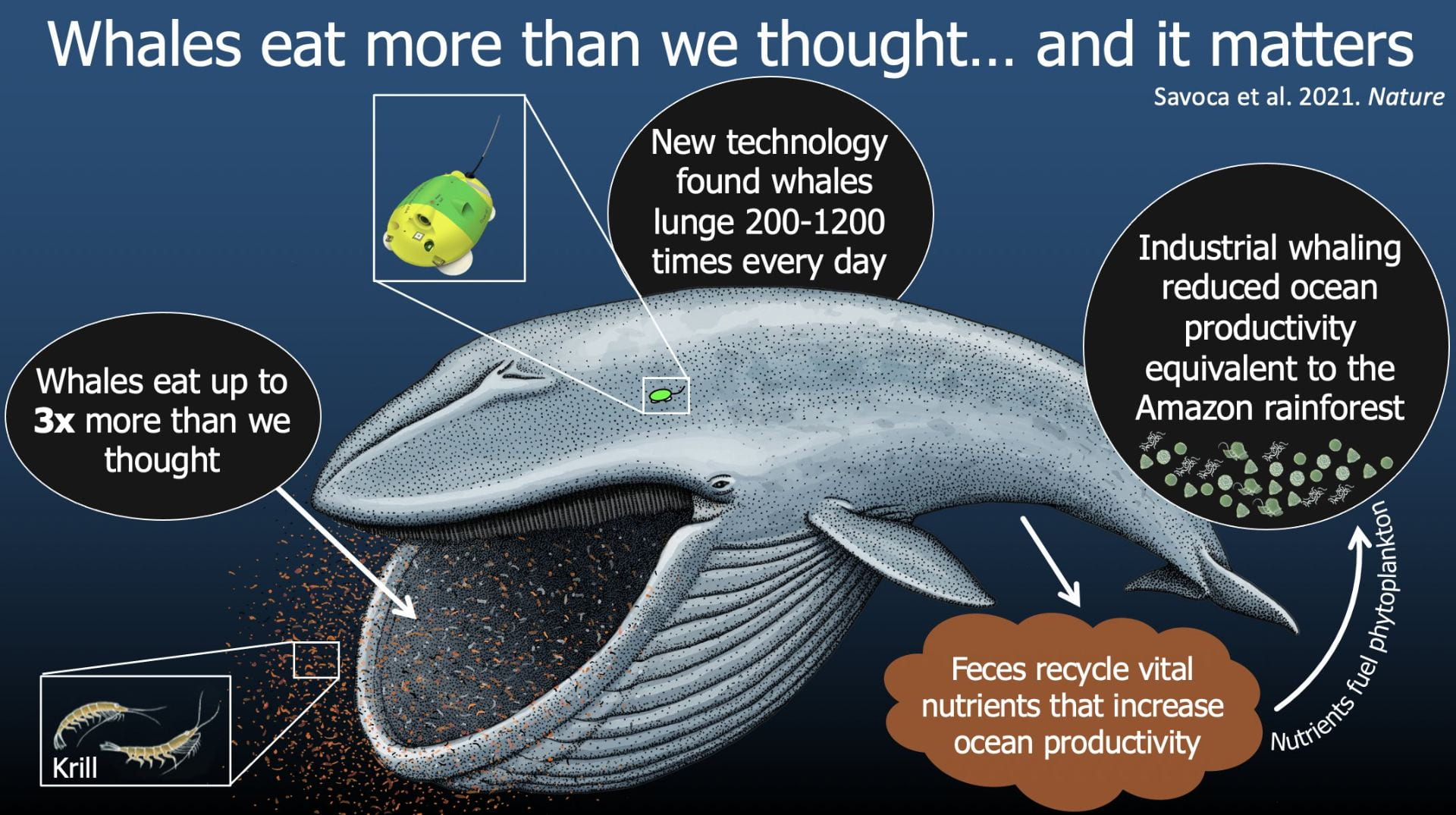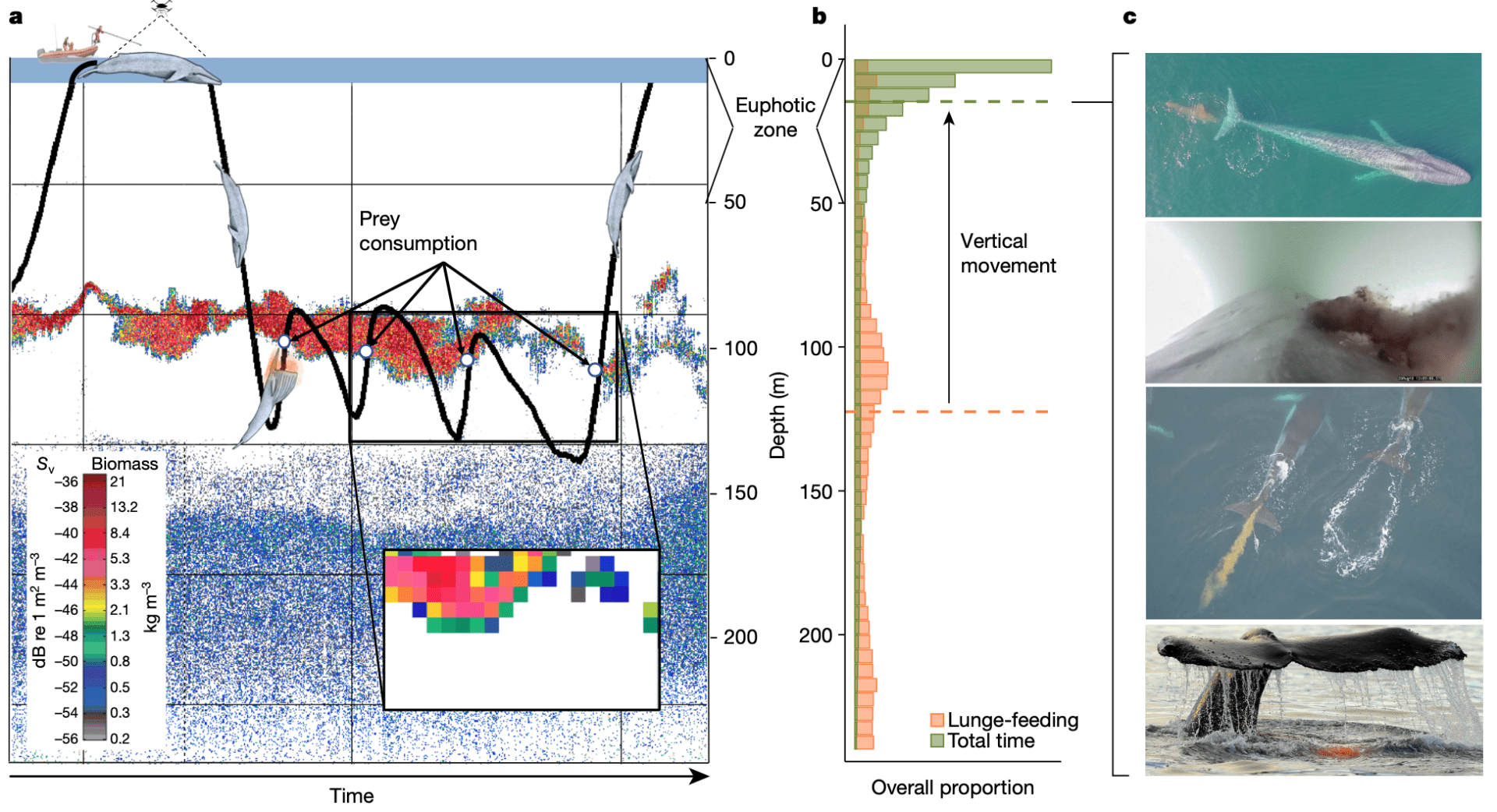 Infographic (c) Stephanie Brodie
Infographic (c) Stephanie Brodie
From 1910 to 1970, humans killed an estimated 1.5 million baleen whales in the frigid water encircling Antarctica. They were hunted for their blubber, baleen – the filtering fringe they have in place of teeth – and meat. One might assume that from the perspective of krill – the tiny shrimp-like creatures the whales feast on – this would be a boon. Yet the krill are at a fraction of their historical biomass.
With these new consumption estimates, the researchers calculated that the early 20th- century abundance of krill in the Southern Ocean was about five times what it is now in order to feed the pre-whaling whale population. This implies a complex role for whales in their ecosystems where the decline or recovery of their populations is strongly tied to overall ecosystem productivity and functioning.
 Figure 1. Fieldwork needed to measure whale size, behavior, and the density of the prey they eat. The vertical difference in foraging and feces may redistribute nutrients to keep marine ecosystems flowing.
Figure 1. Fieldwork needed to measure whale size, behavior, and the density of the prey they eat. The vertical difference in foraging and feces may redistribute nutrients to keep marine ecosystems flowing.
